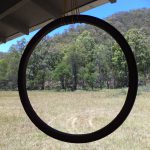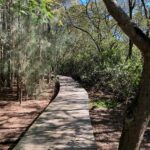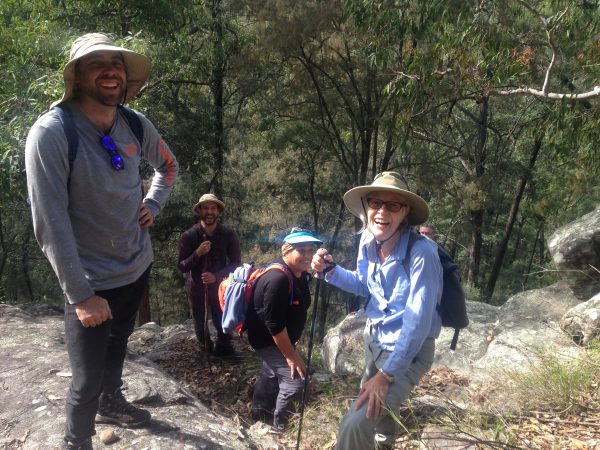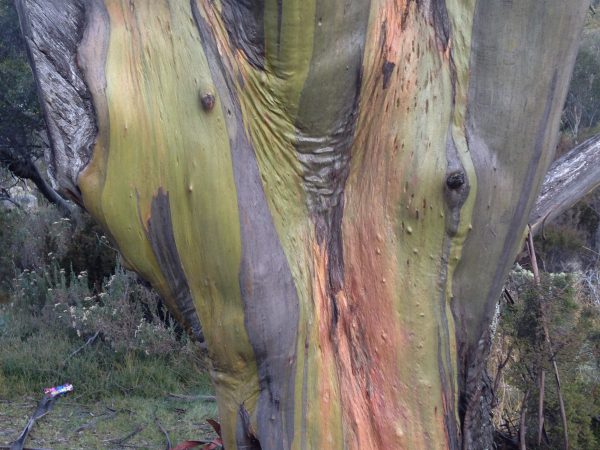Every Time You Breathe In, Thank A Tree – Gillian Coote
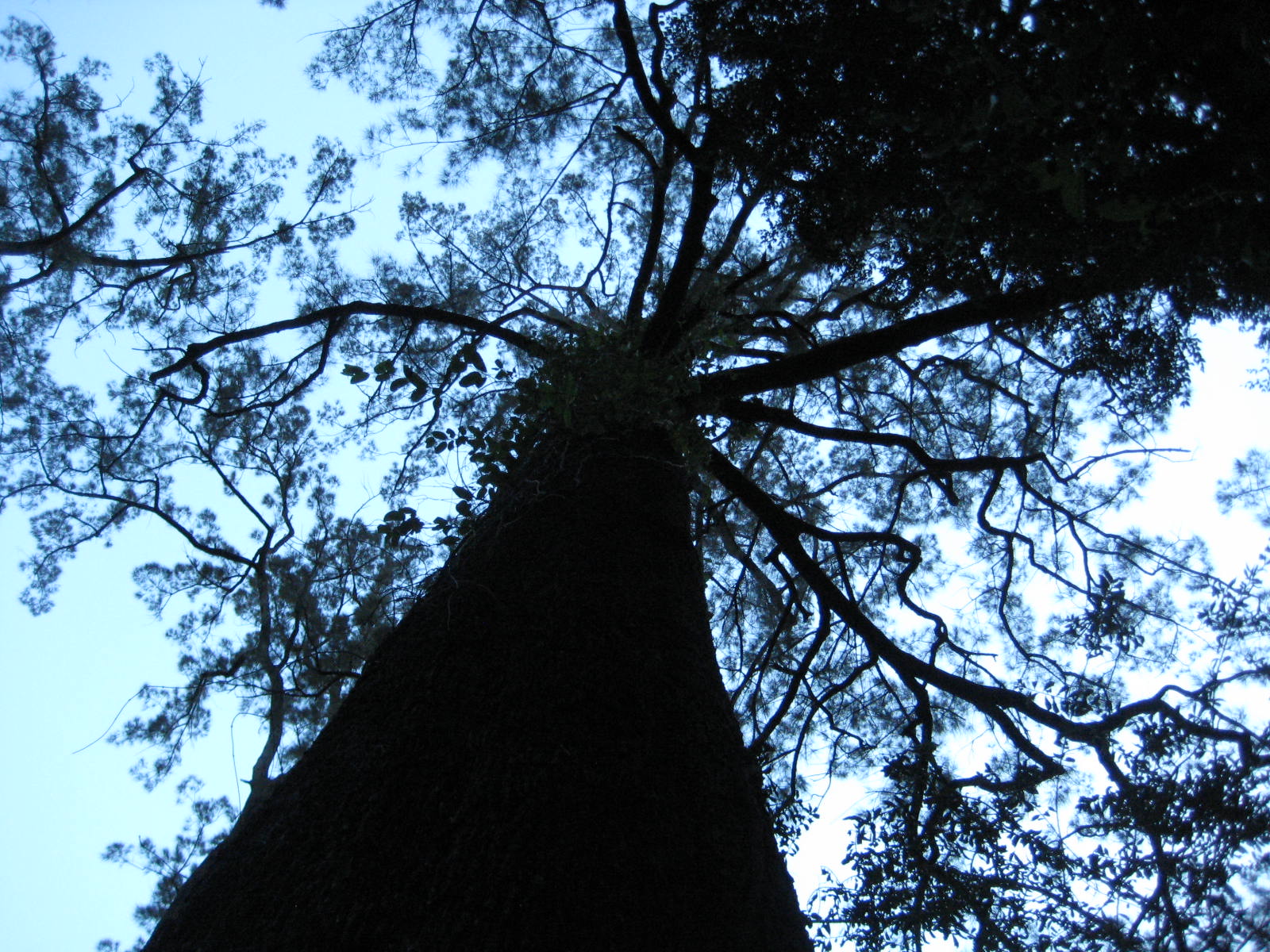
At our recent samu at Gorricks Run, I asked Heath and Fleur (Nick and Jo’s children), whether trees breathed. They weren’t too sure, so we embarked on an experiment. We picked some leaves and put them in a glass of water, weighing them down with a little rock. We had to wait a few hours for a result, but there always lots of things to do up there, like throwing the dog a ball. (2)
After lunch, we took a close look at the leaves in the glass of water– sure enough, some tiny bubbles had formed, oxygen released by the leaves, the evidence we needed to show that plants do ‘breathe’ through their leaves! But without a microscope, we couldn’t see the tiny openings in the leaves called stomata – Greek for ‘mouth’ – that allow plants to exchange gases necessary for cellular processes, such as photosynthesis.
Stomata open and close to allow the intake of carbon dioxide and the release of oxygen that we ourselves need to breathe in, to survive. Not only does breathing provide our bodies with necessary oxygen, but it also rids them of waste like carbon dioxide, which our blood delivers to the capillaries surrounding our alveoli, tiny sacs within our lungs. It then moves into our lungs, where it leaves the body when we breathe out. Breathing in oxygen, breathing out carbon dioxide – that’s what we do all our lives. Breathing in carbon dioxide, breathing out oxygen – that’s what trees and all plants do all their lives. What a wonderful and mysterious exchange. And there’s more.
‘The capacity of trees to synthesise and sequester carbon through photosynthesis as they grow has made afforestation an important practice in the age of warming. A recent paper from Oxford University has conservatively estimated that afforestation could draw down one to three gigatons of carbon dioxide per year in 2030 and l8 gigatons by 2050.’ (3)
This information comes from an encouraging book, ‘Drawdown’, edited by Paul Hawken, (4) which documents existing programs which ‘draw down’ carbon, a book written to see global warming not as an inevitability, but as an invitation to ‘build, innovate and effect change, a pathway that awakens creativity, compassion and genius’, in the face of what is at stake for our planet.
There are two means to achieve the reduction of greenhouse gas concentrations in the atmosphere – a radical decrease in human- caused emissions and widespread adoption of proven land and ocean practices that sequester carbon from the air and store it for decades –when Heath and Fleur will be adults – and even centuries.
So, one hundred meticulously peer-reviewed solutions to reverse global warming are presented, detailing gigatons of carbon dioxide reduced, as well as net costs and savings in such diverse areas such as energy, transport and land use, including forest protection and afforestation. (5)
Just days after buying ‘Drawdown’, I heard an ABC interview with Patricia Scotland, Secretary-General for the Commonwealth, who said that the ideas in Drawdown have now been taken up by the Commonwealth Secretariat to support small endangered states in the Pacific and Caribbean. She called it ‘regenerative development’. (6)
Who knew that the planet loses more than 15 billion trees every year, much of them cleared for farmland to feed the world’s booming population? That deforestation and forest degradation make up l7% of the world’s carbon emissions, more than the entire world’s transportation sector, according to the UN?
Now for some good news – an Australian engineer, Dr Susan Graham, has been helping develop a drone system that can scan the land, identify ideal places to grow trees, and then shoot germinated seeds into the soil. Drones can plant in areas previously impossible to reach, like steep hills. “Although we (hand) plant about 9 billion trees every year, that leaves a net loss of six billion trees. With a pair of drone operators, we will be able to plant nearly 100,000 trees each day and sixty teams will get us to a billion trees a year – ten times the rate of hand planting and 20% of the cost”. (7)
While these seed-planting drones are a timely invention, trees do take a while to grow.In the meantime, with whatever gifts and energy are at our disposal, let’s do what we can, including planting and protecting native vegetation.
In the face of global warming, let’s deepen our practice of the Prajna Paramitas. especially kshanti – gentle forbearance, endurance of hardship and acceptance of truth (often translated as patience) and respond to these challenges with creativity and compassion – for the sake of Heath, Fleur and all the many beings.
And let’s notice when we close down in despair, because resistance to suffering is dukkha, the anguish we feel when we don’t want to suffer. It’s because we love the natural world and experience anticipatory grief for what we know is being lost and for what will be lost, that we do what we can. Even though you may ask yourself in times of despair and grief, ‘what can one person do in the face of such enormity?’, remember that we are not one person, we are interconnected and interdependent and each tiny compassionate action is powerful.
And remember, every time you breathe in, thank a tree.
This is an excerpt from ‘Trees’ – the Autumn/Winter 2017 edition of our Mind Moon Circle journal
Notes:
1. ‘Every time you breathe in, thank a tree’ from a poem by John Wright
2. Susan Elvidge, Science Project Ideas
3. Drawdown: The Most Comprehensive Plan Ever Proposed to Reverse Global Warming, ed. Paul Hawken, (pub. Penguin 2017)
4. ibid
5. ibid
6. Gregg Borschmann, ABC RN Breakfast (19/5/17) 7. Jake Sturmer, ABC News, 25/6/17


